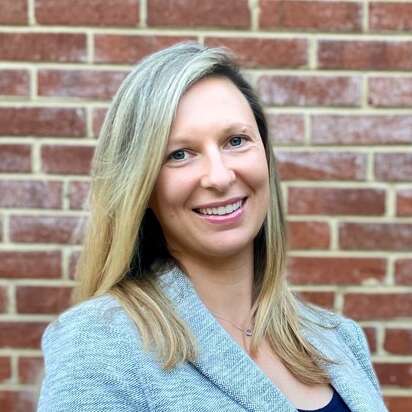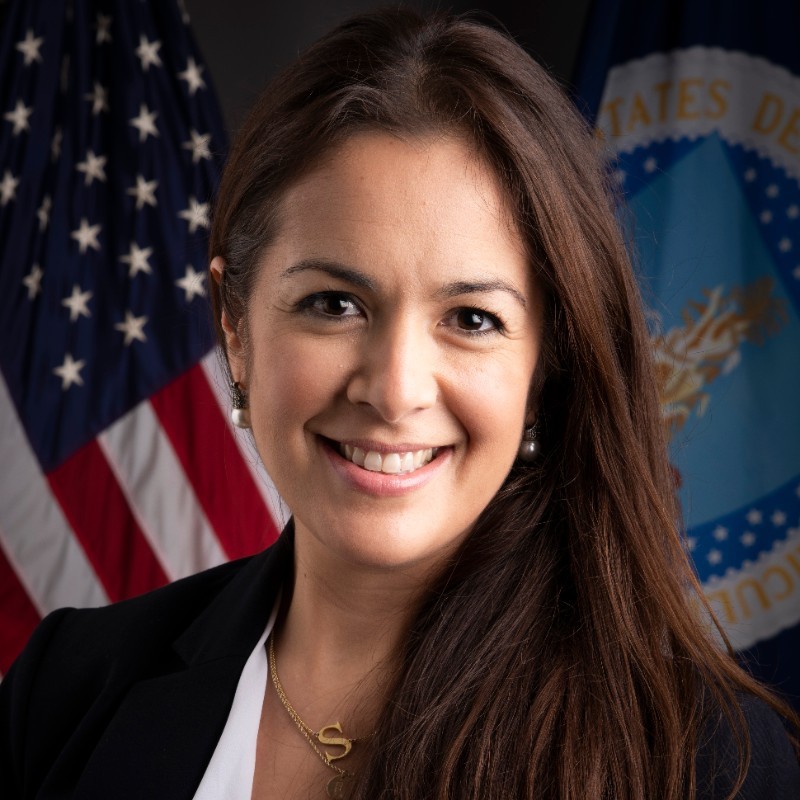Hubbard Radio Washington DC, LLC. All rights reserved. This website is not intended for users located within the European Economic Area.
On Air: Federal News Network

Executive order shining brighter light on customer service improvements
On Demand
During this exclusive webinar, moderator Jason Miller will discuss how data-driven insights and automation can improve customer experience with agency and industry leaders.
Duration: 1 hour
Cost: No Fee
From the December 2021 executive order to the President’s Management Agenda to a possible bill in Congress creating a new Chief Customer Experience Officer at OMB, there is a full court press to change the way agencies deliver services to citizens.
Agencies need to rethink how they design, deliver and secure services. They need to find the right balance of making services easy to use, but still secure as a way to improve citizen trust as they interact and transact with the government.
In many ways, contact or call centers are at the front of the line as agencies rethink and modernize their services.
Contact centers provide intelligence and insights that improve the understanding of agency customers. Agencies need to use this data and feedback, from both customers and employees, to drive improvements.
Of course, they will do this through technologies like cloud, data analytics and automation.
Simchah Suveyke-Bogin, the chief customer experience officer for the Department of Agriculture, said the new executive order, particularly has really put a light on agencies that have a high impact on their customer base.
“I look at agencies like the Forest Service, and then we have multiagency initiatives like Recreation.gov where we’re really bringing folks together to look at where are the parallels along their customer bases, where are some of their journeys very similar? Can we work a little bit more closely together on that opportunity to listen, but also where can we share the data to gain some insights? What action I might take at the Forest Service might be very different than an action that the Recreation.gov might take based on that data,” Suveyke-Bogin said during the discussion Data Driving Customer Service. “We’re just looking for those opportunities because what we’ve also seen is, as more segments of folks are looking at this data, the action can be in the products can be quite different in terms of outcome.”
She added the data also can lead to agencies changing their business processes, updating policies and overall making the services better.
Break down data siloes
Like USDA, the Transportation Security Administration faces a wide customer base and a growing amount of data about them.
Niki French, the customer service branch manager at the TSA in the Homeland Security Department, said the EO has helped the agency break down data siloes that is leading to better customer services.
“The biggest data collection that we have is from our TSA contact center. We get roughly 1.5 million contacts a year. The overwhelming majority is actually information requests. But we do get of course, complaints, compliments and, then, we get a lot of requests for assistance through our TSA Cares program,” French said. “All of this data is insanely valuable. We have our agents select a primary and secondary subject category, which means that we can get really into the weeds. We can split that data up into various airports to try to track trends between small airports, large airports and medium airports.”
She said all of that data leads TSA to develop and improve training of Transportation Security Officers and contact center agents.
While USDA and TSA are more mature in how they can use their customer experience data, the Department of Housing and Urban Development is just getting started.
Amber Chaudhry, the chief customer experience lead at HUD, said with OMB naming its housing discrimination complaint process as a high impact service provider, the agency is just getting started with understanding its data.
“We actually just wrapped up the research phase and identified the opportunity areas and problem spaces. Now we’re just in the process of going back to leadership to decide which one of those recommendations that we’ll be implementing in that next fiscal year,” Chaudhry said. “We are only collecting the voice of the customer surveys in pockets because we really haven’t done that initial research to identify the moments that matter to place those surveys. We really want to be mindful about serving our customers and we haven’t been able to unlock that full potential of doing that analysis of that data. We are in the process of preparing a voice of the customer platform.”
Improving employees’ experience too
Scott Clarke, the vice president of technology strategy and solutions at Maximus Federal, said the combination of data with the innovations in technology is giving agencies an opportunity to serve customers better than ever before.
Clarke said agencies can use data to help drive both employee experience and customer experience improvements.
“The technology to enable analytics to have those conversations, whether from chats or emails or the voice channel, is certainly a great enabler. The direct conversations you have with those frontline folks can be just as informative as again, the data you get from your constituents or your citizens,” he said. “What we’re seeing is the ability to gather that, consume it and take actionable insights that inform and change not only the caller’s experience or the citizen experience, but also the agent’s experience. Are we able to provide more updated information, and more timely information? We have the ability to make a real time adjustment to a conversation, and those are the kinds of things that have incredible impact on the employee experience, so that you get better engagement, which again, directly leads to a better overall customer experience.”
Underlying all this data and analytics, of course, is the infrastructure that the tools run on.
Saqib Sheikh, the head of strategy and growth at AWS, said getting real time data interact with an agency’s physical touch points like sensors, can lead to real time interventions to redirect crowds, for example.
“It’s really about bridging that digital and in person experience, and then just making that in person experience even more richer and rewarding and meaningful for people,” Sheikh said. “It is so critical to marry your mission and values to the front line. Government agencies are overwhelmed with demand and if you just focus on the volume processing, the number of people that I can get through the airport as fast as possible or number of people that I can serve at the Post Office, you could harm customer experience in a big way if that’s the only measure of success. It has to be balanced by doing things in a delightful way, in a way that truly meets the needs of the person.”
Learning objectives:
- Strategies to Improve Customer Experience
- Data-Driven Decision Making
- Workforce Impact on CX
Complimentary registration
Please register using the form on this page or call (202) 895-5023.
By providing your contact information to us, you agree: (i) to receive promotional and/or news alerts via email from Federal News Network and our third party partners, (ii) that we may share your information with our third party partners who provide products and services that may be of interest to you and (iii) that you are not located within the European Economic Area.
Please register using the form on this page.
Have questions or need help? Visit our Q&A page for answers to common questions or to reach a member of our team.
Speakers

Niki French
Customer Service Branch Manager, Transportation Security Administration

Amber Chaudhry
Customer Experience Lead, Department of Housing and Urban Development

Simchah Suveyke-Bogin
Chief Customer Experience Officer, United States Department of Agriculture

Saqub Sheikh
Head of Strategy and Growth, AWS

Scott Clarke
Vice President, Technology Strategy and Solutions, Maximus Federal

Jason Miller
Executive Editor, Federal News Network
Sponsors

By providing your contact information to us, you agree: (i) to receive promotional and/or news alerts via email from Federal News Network and our third party partners, (ii) that we may share your information with our third party partners who provide products and services that may be of interest to you and (iii) that you are not located within the European Economic Area.
